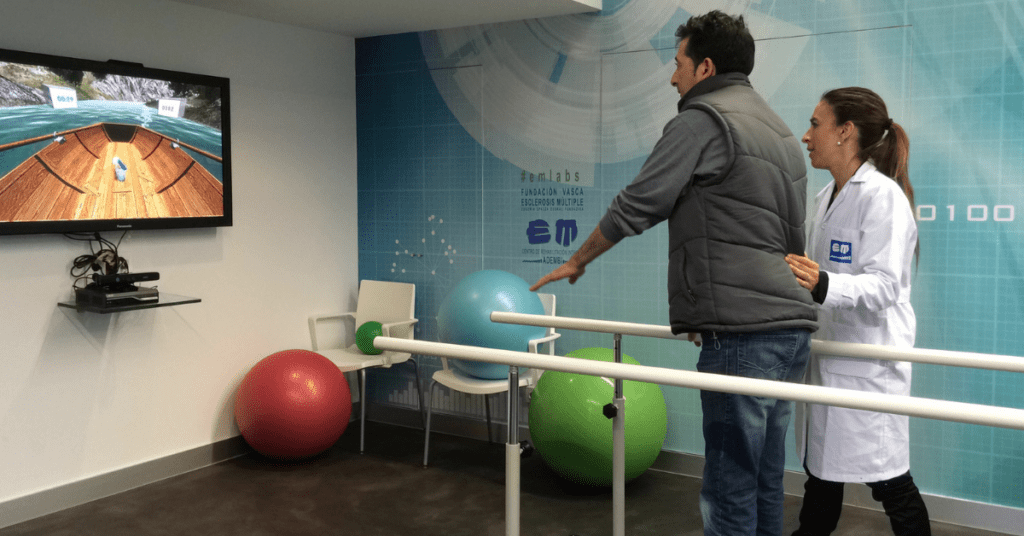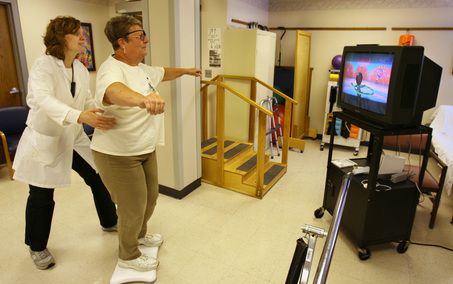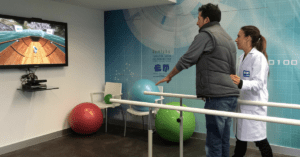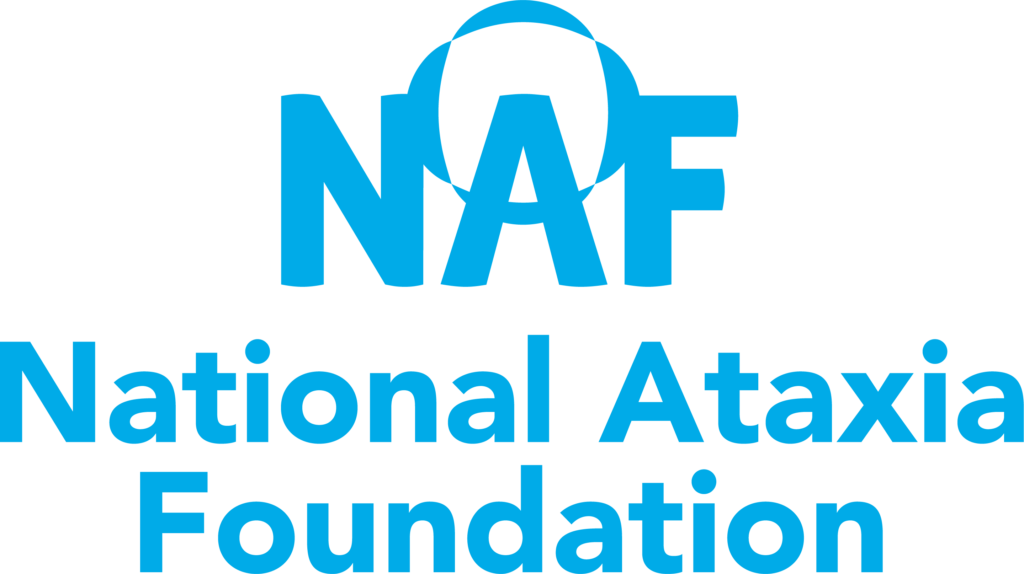
Guest Author: Ellie Martin
Over the years, technology has become a widely used tool for therapeutic programs and rehabilitation research. By replicating real-life scenarios in a controlled environment, simulation training offers a safe and effective way to assess and improve balance skills. The advances in technology have become a good resource for therapists to use in rehabilitation settings. Some of these technologies include:
- Virtual Reality (VR)
- Bertec
- Nintendo Wii Fit
What is Virtual Reality?
Virtual reality (VR) technology has become a tool used in rehabilitation, offering a unique approach for therapeutic interventions. VR has many different tasks that are like real-life situations facilitating motor, cognitive, and emotional rehabilitation. For physical rehabilitation, VR can provide exercises that target specific movements and muscle groups. A study done by Mao et al. found that, “compared with conventional rehabilitation therapy, there is a more significant improvement in motor function and activities of daily living when treated using virtual reality.” VR can be personalized to the individual by the level of difficulty of the tasks and scenarios, making it a more engaging experience. VR offers opportunities for memory and attention training through interactive games and simulations designed to improve cognitive functions. Overall, virtual reality enhances the rehabilitation process through the exposure of real-life scenarios
What is Bertec?
Similar to virtual reality, Bertec evaluates and assesses individuals sensory and motor function through virtual scenarios. While in this dome-like simulator, therapists test your balance and reaction timing by performing many different tasks that require shifting your balance. The floor of the Bertec does move slightly with the individual’s movement so a harness is required to prevent falling. I have used this form of rehabilitation at Central DuPage Hospital. It is a unique and engaging experience if you are looking to try something new. The therapists can use the assessment scores from the Bertec to develop a proper treatment plan that is just for you.
What is Nintendo Wii?
Unlike most video games that use only a controller, the Nintendo Wii games are considered to have more active engagement and movement. The Nintendo Wii is said to be the most popular virtual reality tool in neurorehabilitation. The Wii is a simple tool that patients can use at the comfort of their own home. Users of the Nintendo Wii can engage virtually in various activities by using a handheld controller or joystick. Yu Xing at the Department of Physical Education and Training says, “Wii Fit exercise is an effective approach to improve functional, static, and dynamic balance among older adults.”T

Simulation training enhances balance capabilities across diverse populations. Its ability to recreate realistic environments while providing a safe and controlled setting allows for targeted improvement of balance skills. From athletes to individuals undergoing rehabilitation, simulation training offers proprioception, spatial awareness, and neuromuscular control. As technology continues to evolve, so will the opportunities for refining balance through simulation methods.
Disclaimer: Always seek the advice of your physician or other qualified health care provider with any questions you may have regarding a medical condition or treatment and before undertaking a new health care regimen, exercise, treatment, or nutritional supplement. Views expressed in this article are those of the author. NAF does not endorse any products or services.
Boeldt, Debra, et al. “Using virtual reality exposure therapy to enhance treatment of anxiety disorders: Identifying areas of clinical adoption and potential obstacles.” Frontiers in Psychiatry, vol. 10, 25 Oct. 2019, https://doi.org/10.3389/fpsyt.2019.00773.
P;, Raipure A;Kasatwar. “The Effects of Nintendo Wii Fit on Postural Balance Control Training in the Geriatric Population: A Review.” Cureus, U.S. National Library of Medicine, pubmed.ncbi.nlm.nih.gov/36523697/. Accessed 10 Apr. 2024.
Mao, Yurong, et al. “Virtual Reality Training Improves Balance Function.” Neural Regeneration Research, U.S. National Library of Medicine, 1 Sept. 2014, www.ncbi.nlm.nih.gov/pmc/articles/PMC4211206/.
About the Author
My name is Ellie Martin and I have a rare form of Cerebellar Ataxia. I recently graduated from college where I studied rehabilitation services. I wrote this article as a part of a series of blogs to share information I learned along with some personal experiences on the subject.
Read My Past Articles:

















